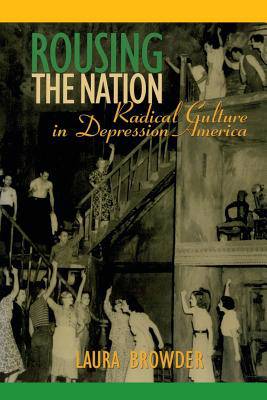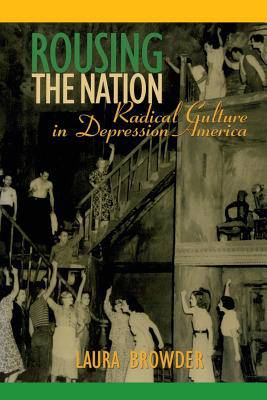
- Afhalen na 1 uur in een winkel met voorraad
- Gratis thuislevering in België vanaf € 30
- Ruim aanbod met 7 miljoen producten
- Afhalen na 1 uur in een winkel met voorraad
- Gratis thuislevering in België vanaf € 30
- Ruim aanbod met 7 miljoen producten
Zoeken
€ 37,95
+ 75 punten
Omschrijving
A reevaluation of American cultural politics in the 1930sThis interdisciplinary study blends textual analysis with social history to chart the intellectual and artistic ferment of Depression-era America. In Rousing the Nation, Laura Browder explores the fiction, drama, and film produced during the decade by socially conscious intellectuals who struggled to create a uniquely American art. Challenged by a public more exposed to comic strips and tabloids than to serious artistic creativity, these writers and cinematographers used the techniques of modernism and muckraking to fashion works that would be experimental without being insular and would inspire the public to social activism.Browder first considers authors James T. Farrell, Josephine Herbst, and John Dos Passos, arguing that their work successfully sparked a discussion about what it meant to be American at a time when the country's very future seemed in doubt. She then examines the Living Newspaper productions of the Federal Theatre Project, which brought politically and aesthetically provocative drama to twenty-five million Americans. In a final chapter, she examines social films of the period, focusing on Paramount's 1939 production of One-Third of a Nation.
Specificaties
Betrokkenen
- Auteur(s):
- Uitgeverij:
Inhoud
- Aantal bladzijden:
- 240
- Taal:
- Engels
Eigenschappen
- Productcode (EAN):
- 9781558497504
- Verschijningsdatum:
- 15/12/2010
- Uitvoering:
- Paperback
- Formaat:
- Trade paperback (VS)
- Afmetingen:
- 152 mm x 229 mm
- Gewicht:
- 358 g

Alleen bij Standaard Boekhandel
+ 75 punten op je klantenkaart van Standaard Boekhandel
Beoordelingen
We publiceren alleen reviews die voldoen aan de voorwaarden voor reviews. Bekijk onze voorwaarden voor reviews.











